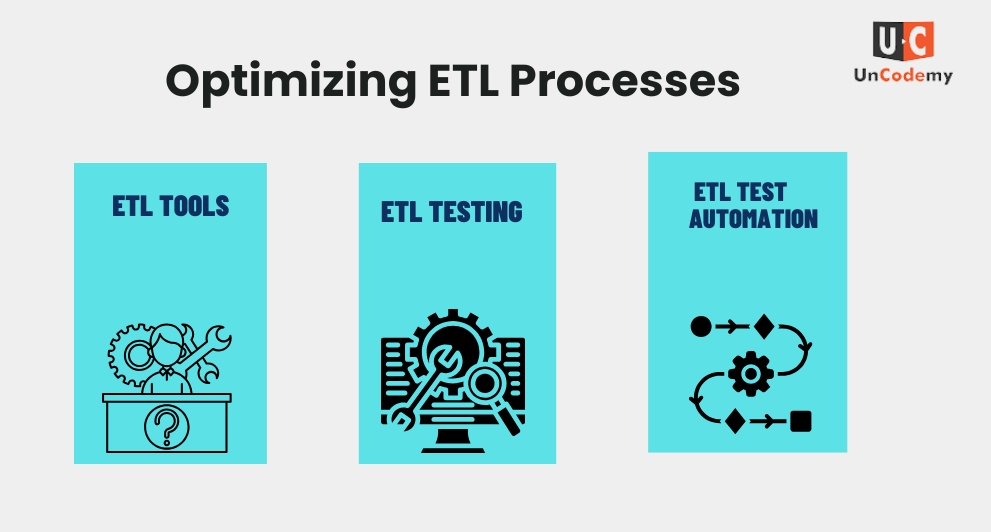Spatial Data Analysis: Importance, Techniques, Tools, and More

Spatial data analysis is a powerful field of study that combines data science, geography, and statistics to examine patterns, relationships, and phenomena across geographic locations. Whether it’s mapping the spread of diseases, analyzing urban growth, or studying environmental changes, spatial data analysis plays a crucial role in understanding the world around us. With the growing availability of geographic information systems (GIS) and spatial data, professionals in fields like urban planning, epidemiology, environmental science, and transportation increasingly rely on spatial data analysis to make informed decisions. This blog post will explore the importance, techniques, tools, and applications of spatial data analysis.
What is Spatial Data Analysis?
Spatial data analysis refers to the process of examining and interpreting data that has a geographic or spatial component. This type of analysis involves studying the relationships between different variables or features that exist in specific locations or regions. The goal is to uncover spatial patterns, identify trends, and make predictions or decisions based on the geographic distribution of the data.
Spatial data can take many forms, including:
- Point data: Represents specific locations, such as the location of a city or a hospital.
- Line data: Represents linear features, such as roads or rivers.
- Polygon data: Represents areas, such as the boundaries of a country, city, or park.
- Raster data: A grid-based representation of geographic features, where each cell in the grid has a value representing a specific characteristic, such as temperature or elevation.
This involves processing and interpreting these different types of data to identify patterns, relationships, and trends. The analysis typically combines statistical techniques with geographic principles to derive meaningful insights from spatial datasets.
The Importance of Spatial Data Analysis
Spatial data analysis has become increasingly important in numerous fields due to its ability to reveal critical insights and improve decision-making. Here are some of the primary reasons why spatial data analysis is crucial:
1. Decision-Making in Urban Planning
Urban planners use spatial data analysis to evaluate land use, infrastructure, and resource allocation within cities. By analyzing spatial data, they can determine optimal locations for new housing, schools, hospitals, and transportation networks. Moreover, understanding patterns of urban sprawl and predicting future growth is essential for creating sustainable, efficient cities.
2. Environmental Monitoring and Conservation
In environmental science, spatial data analysis is used to monitor changes in ecosystems, track deforestation, assess the impact of climate change, and plan conservation efforts. Geographic data allows researchers to assess the health of natural habitats, biodiversity, and the effects of human activities on the environment.
3. Disaster Management
In disaster management, spatial data analysis is essential for risk assessment and response planning. Geographic information about weather patterns, flood zones, earthquake-prone areas, and population density is used to predict where disasters might occur and to plan effective evacuation routes. After a disaster, spatial data helps in assessing damage and coordinating recovery efforts.
4. Public Health and Epidemiology
Epidemiologists use spatial data analysis to track the spread of diseases and identify patterns of health-related outcomes. By analyzing the geographic distribution of disease outbreaks, health experts can identify at-risk populations, assess environmental and social factors contributing to disease spread, and make informed decisions about public health interventions.
5. Agriculture and Precision Farming
In agriculture, spatial data analysis is used for precision farming, which involves optimizing the use of resources like water, fertilizers, and pesticides. By analyzing spatial data on soil quality, weather patterns, and crop health, farmers can improve yields, reduce waste, and minimize environmental impact.
6. Transportation and Logistics
Transportation planners use spatial data analysis to optimize routes, reduce congestion, and improve traffic flow. Analysis of road networks, traffic patterns, and transportation infrastructure helps improve public transit systems and logistics for shipping and delivery.
7. Crime Analysis and Law Enforcement
Law enforcement agencies use spatial data analysis to study crime patterns and hotspots. By mapping the geographic locations of crimes, police can allocate resources more effectively, predict crime trends, and develop strategies for reducing criminal activity in specific areas.
Techniques in Spatial Data Analysis
Several techniques are used in spatial data analysis to derive insights and answer specific research questions. These techniques can be broadly categorized into exploratory methods, statistical models, and predictive analysis methods. Some of the most commonly used techniques include:
1. Spatial Visualization
Spatial visualization refers to the process of creating maps and visual representations of spatial data to better understand the distribution of geographic features or phenomena. This is often the first step in spatial data analysis, as it helps reveal patterns, trends, and outliers.
2. Spatial Autocorrelation
Spatial autocorrelation measures the degree to which the value of a variable at one location is similar to the values at nearby locations. It is used to identify spatial patterns like clustering or dispersion in the data. One of the most common metrics for spatial autocorrelation is the Moran’s I statistic, which helps determine if the distribution of a variable is random, clustered, or dispersed.
3. Hot Spot Analysis
Hot spot analysis is used to identify areas where a particular phenomenon occurs more frequently than expected. This technique is often used in crime analysis, disease mapping, and environmental studies to identify “hot spots” of high activity or risk. Methods like the Getis-Ord Gi statistic* are commonly used for hot spot detection.
4. Spatial Interpolation
Spatial interpolation is used to estimate values at unsampled locations based on nearby known values. This is particularly useful in cases where data points are sparse but there is a need to estimate data across a continuous space, such as estimating temperature or air pollution levels across a region. Popular interpolation techniques include Kriging, Inverse Distance Weighting (IDW), and Spline interpolation.
5. Geostatistics
Geostatistics is a set of techniques used to model spatially correlated data and make predictions about unknown locations. Geostatistical methods like variogram analysis and Kriging are widely used in fields such as geology, environmental science, and agriculture to predict values and assess uncertainty in spatial data.
6. Network Analysis
Network analysis involves studying the connections and relationships between nodes (points) in a network, such as roads, pipelines, or electrical grids. It is used to analyze the flow of resources, identify bottlenecks, and optimize infrastructure. Techniques like shortest path algorithms, centrality analysis, and service area analysis are commonly used in transportation and logistics.
7. Point Pattern Analysis
Point pattern analysis is used to study the spatial arrangement of points or events, such as the locations of trees, crimes, or disease cases. Techniques like Ripley’s K-function and nearest neighbor analysis help assess whether points are randomly distributed, clustered, or dispersed.
8. Multivariate Spatial Analysis
Multivariate spatial analysis involves analyzing the relationship between multiple spatial variables or datasets. This can involve spatial regression models, spatial econometrics, or principal component analysis (PCA) to understand how different factors interact in space.
Tools for Spatial Data Analysis

There is a wide range of tools available for conducting spatial data analysis, ranging from user-friendly software to more advanced programming libraries. Here are some of the most popular tools:
1. Geographic Information Systems (GIS)
Geographic Information Systems (GIS) are the most widely used tools for spatial data analysis. GIS software enables users to visualize, analyze, and interpret spatial data. Some of the most popular GIS platforms include:
- ArcGIS: A comprehensive GIS software suite developed by Esri, widely used for spatial analysis, mapping, and geospatial data management.
- QGIS: An open-source alternative to ArcGIS, QGIS offers many features for spatial data analysis and is highly customizable with plugins.
- Google Earth Engine: A cloud-based platform for analyzing geospatial data, especially useful for remote sensing and environmental monitoring.
2. R and Python Libraries
For more advanced analysis, programming languages like R and Python offer powerful libraries for spatial data analysis:
- R: The sp, sf, raster, and gstat packages in R are commonly used for geospatial analysis, spatial statistics, and geostatistics.
- Python: Python libraries like geopandas, shapely, pyproj, and scikit-mobility provide robust tools for spatial data manipulation and analysis.
3. Spatial Databases
Spatial databases store and manage spatial data in a way that allows efficient querying and analysis. Examples include:
- PostGIS: A spatial extension for PostgreSQL, which allows for advanced spatial queries and analysis.
- Spatialite: A spatial extension for SQLite that supports geospatial data management and analysis.
4. Remote Sensing Tools
Remote sensing tools like ENVI and ERDAS IMAGINE are commonly used for analyzing satellite and aerial imagery. These tools provide functionality for processing raster data, detecting changes in the landscape, and classifying land cover.
5. Web Mapping Tools
Web mapping platforms like Leaflet and Mapbox allow users to create interactive maps for spatial data analysis and visualization. These tools are useful for sharing geospatial insights in online dashboards or web applications.
Applications of Spatial Data Analysis
Spatial data analysis is a critical tool for understanding and interpreting geographical and spatial patterns across various fields such as geography, urban planning, environmental science, and public health. It involves the collection, visualization, and interpretation of spatially referenced data to uncover patterns, relationships, and trends.
Key applications include:
- Urban Planning: Spatial data helps in optimizing land use, zoning, and infrastructure planning. It supports decisions on where to build roads, housing, and commercial spaces by analyzing patterns of population density, accessibility, and land availability.
- Environmental Monitoring: By mapping environmental changes, such as deforestation, air quality, and land degradation, spatial data analysis aids in monitoring ecosystem health. It also supports the identification of conservation areas and the management of natural resources.
- Public Health: Spatial data is crucial for tracking the spread of diseases, identifying high-risk areas, and planning health interventions. It helps map disease clusters, allocate healthcare resources effectively, and predict future outbreaks.
- Disaster Management: Spatial analysis is used in disaster risk assessment, such as identifying flood zones, earthquake-prone areas, or fire risks. It assists in planning evacuation routes and ensuring timely response during natural disasters.
- Agriculture: In precision farming, spatial data analysis helps optimize crop yields by analyzing soil health, weather patterns, and irrigation needs, leading to more efficient farming practices.
These applications demonstrate how spatial data analysis supports informed decision-making and sustainable development across multiple sectors.
Challenges in Spatial Data Analysis
Spatial data analysis offers many benefits, but it also faces several challenges, including:
- Data Quality and Accuracy: Spatial data can be prone to errors due to inaccuracies in data collection methods, such as GPS errors or outdated information. Ensuring high-quality, reliable data is critical for accurate analysis.
- Data Integration: Combining spatial data from different sources (e.g., satellite imagery, surveys, maps) can be difficult due to differences in formats, scales, and accuracy. Harmonizing these datasets for meaningful analysis is a complex task.
- Scalability: Analyzing large-scale spatial data, such as data from entire countries or global regions, can be computationally intensive. Efficient processing, storage, and management of big spatial datasets are essential for scalable analysis.
- Handling Complex Relationships: Spatial data often involves intricate relationships between different variables. Analyzing these spatial dependencies and understanding how geographic patterns influence one another can be challenging and requires advanced statistical techniques.
- Spatial Autocorrelation: Spatial data often exhibit autocorrelation, meaning nearby locations are more likely to be similar. Addressing this spatial dependence without violating statistical assumptions complicates analysis.
- Privacy and Ethical Issues: The use of spatial data, especially in fields like health or social media, raises privacy concerns. Ensuring ethical use of sensitive data is critical to avoid misuse or violations of privacy rights.
These challenges require advanced methodologies, robust data management strategies, and careful consideration of ethical implications.
Conclusion
Spatial data analysis is an essential tool in modern decision-making, allowing us to understand and respond to geographic patterns and relationships. Whether in urban planning, environmental conservation, public health, or transportation, spatial data analysis offers invaluable insights that drive more informed, data-driven decisions. With the advancements in technology and the availability of sophisticated tools, the potential for spatial data analysis is only continuing to grow. As more industries embrace geospatial data, the demand for skilled professionals who can interpret and analyze spatial data will undoubtedly rise, opening up numerous opportunities for research, innovation, and problem-solving.
FREQUENTLY ASKED QUESTION [FAQs]
1. What is Spatial Data Analysis?
- Spatial data analysis involves examining geographic or spatial data to uncover patterns, relationships, and trends. This includes using mathematical and statistical techniques to analyze locations, distances, and spatial distributions.
2. Why is Spatial Data Analysis important?
- It is crucial for decision-making in fields like urban planning, environmental science, agriculture, and public health. It helps in understanding spatial patterns, optimizing resources, and predicting future trends.
3. What are the common techniques used in Spatial Data Analysis?
- Common techniques include spatial autocorrelation, kriging (interpolation), spatial regression, hotspot analysis, spatial clustering, and geographic information system (GIS) modeling.
4. What tools are used in Spatial Data Analysis?
- Popular tools include GIS software like ArcGIS and QGIS, statistical tools such as R and Python (with libraries like GeoPandas and PySAL), and specialized platforms like Google Earth Engine and GeoDa.
5. How does Spatial Data Analysis differ from regular data analysis?
- Unlike traditional data analysis, spatial data analysis considers the location and relationships between data points in a geographic context, accounting for spatial dependencies and proximity effects.
6. What types of data are used in Spatial Data Analysis?
- Spatial data typically includes geographic information such as coordinates (latitude, longitude), maps, satellite imagery, and spatial features like roads, land use, and environmental variables.
7. What is spatial autocorrelation?
- Spatial autocorrelation measures the degree to which a spatial variable correlates with itself in a given region. High autocorrelation suggests that nearby locations have similar values, whereas low autocorrelation indicates more variation between nearby points.
8. What is Kriging, and how is it used in Spatial Data Analysis?
- Kriging is a geostatistical method used for spatial interpolation to predict unknown values at certain locations based on known data from surrounding areas. It is widely used in environmental science, agriculture, and natural resource management.
9. Can Spatial Data Analysis help in urban planning?
- Yes, it can help urban planners by analyzing land use patterns, traffic flow, pollution distribution, and the impact of new developments, leading to better decisions about zoning, infrastructure, and public services.
10. What are some challenges in Spatial Data Analysis?
- Some challenges include data quality issues (such as incomplete or inaccurate spatial data), spatial scale mismatches, high computational demands, and difficulties in interpreting complex spatial patterns.







